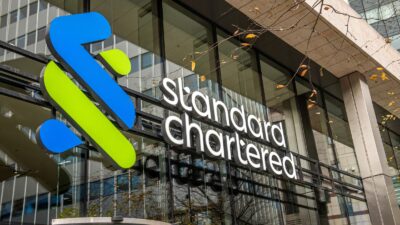Shares of emerging markets asset manager Ashmore Group (LSE: ASHM) rose by nearly 3% this morning, despite the group reporting a 4% fall in assets since the end of September.
Today I’ll consider the safety of Ashmore’s 5.9% dividend yield, and explain why investors are still taking an optimistic view on the firm. I’ll also look at another emerging markets-focused financial stock I believe could deliver big returns in 2017.
Bouncing back fast
Ashmore’s assets under management fell by $2.4bn to $52.2bn during the final three months of 2016. This fall had two parts — net fund outflows of $0.7bn, and negative investment performance of $1.7bn.
This may sound like a weak performance, but it’s worth remembering that this period included the US presidential election. Trump’s victory caused a widespread sell-off of emerging market debt, which is Ashmore’s speciality.
The firm says that it performed strongly relative to its benchmarks throughout the quarter and over 2016 as a whole. Assets under management rose by 5% last year. Chief executive Mark Coombs said this morning that the effect of the US presidential election had been “short-lived” and that asset prices have been rising again since December.
Mr Coombs expects strong performance and an improvement in customer inflows in 2017. The question for investors is whether earnings and cash flow will improve fast enough to protect the group’s 16.7p per share dividend, which is barely covered by forecast 2016 earnings of 18.1p per share.
My feeling is that this payout — which would give a yield of 5.9% at current prices — will probably be maintained. Ashmore is highly cash generative and if trading improves as expected this year, the group’s dividend will rapidly become more affordable again. I’d be happy to buy at current levels.
40% upside for investors?
Ashmore isn’t the only London-listed financial stock focused on emerging markets. Another contender is FTSE 100 bank Standard Chartered (LSE: STAN). The City is still cautious about this bank, but I believe this could be a contrarian buying opportunity.
The Asia-focused bank’s latest numbers showed a steady fall in bad debt levels and stable profits. Although earnings remain very low by historical standards, the bank’s financial strength is improving.
Standard Chartered’s common equity tier one ratio (CET1) has risen from 11.5% to 13% over the last 18 months. Return on equity turned positive during the first half of last year, after 2015’s full-year loss.
There’s still a long way to go, but it’s worth noting that current forecasts suggest that Standard Chartered’s earnings per share will rise from $0.21 in 2016 to $0.50 in 2017. If the group can achieve this kind of momentum, I’d expect investors to become more confident in the quality of the bank’s assets.
In turn, this could lead to a rapid re-rating, of the kind we’ve seen over the last six months at Barclays (+54%) and HSBC Holdings (+41%). Standard Chartered stock currently trades at a discount of about 30% to its tangible book value. I believe that gains of 30%-40% should be possible from current levels.







